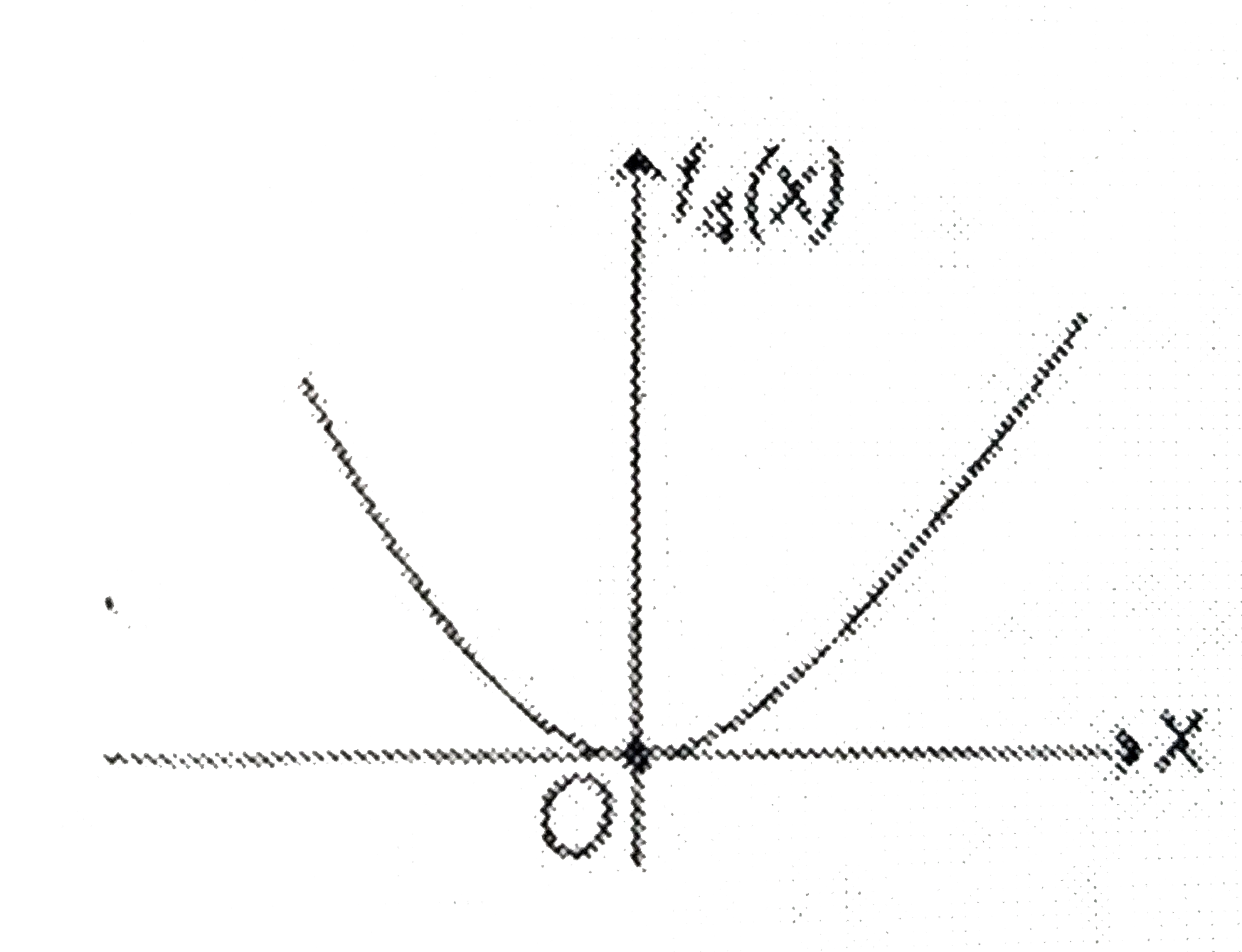Let f1:R→R,f2:[0,∞)→R,f3:R→Randf4:R→[0,∞) be defined by
A
ABCDrpsq
B
ABCDprsq
C
ABCDrpqs
D
ABCDprqs
Video Solution
Text Solution
The correct Answer is:D
PLAN
(i) For such questions, we need ot property define the functions and then we draw their graphs.
(ii) From the graphs, we can examine the function for continuity. defferentiability, one-one and onto.
f1(x)={−x,x<0ex,x≥0
f2(x)=x2,x≥0
f3(x)={sinx,x<0x,x≥0
f4(x)={f2(f1(x)),x<0f2(f1(x))−1,x≥0
Now, f2(f1(x))={x2,x<0e2x,x≥0
⇒f4(x)={x2,x<0e2x−1,x≥0
As f4(x) continuous,f'4(x)={2x,x<02e2x,x>0

f4(0) is not defined. Its range is [0,∞).
Thus, range=codomain=[0,∞),thus f4 is onto.
Also, horizontal line (drawn parallel ot X-axis) meets hte curve more than once, thus function is not one-one.
|
Topper's Solved these Questions
- FUNCTIONSBOOK - IIT JEE PREVIOUS YEARCHAPTER - FUNCTIONSEXERCISE - INVERSE AND PERIODIC FUNCTIONS
11 Videos
- FUNCTIONSBOOK - IIT JEE PREVIOUS YEARCHAPTER - FUNCTIONSEXERCISE - COMPOSITE OF FUNCTIONS
19 Videos
- ELLIPSEBOOK - IIT JEE PREVIOUS YEARCHAPTER - ELLIPSEEXERCISE - EQUATION OF CHORD OF CONTACT, CHORD BISECTED AT A GIVEN POINT & DIAMETER
3 Videos
- HYPERBOLABOOK - IIT JEE PREVIOUS YEARCHAPTER - HYPERBOLAEXERCISE - EQUATION OF CHORD OF CONTACT,CHORD BISECTED DIAMETER,ASYMPTOTE AND RECTENGULAR HYPERBOLA
3 Videos
Similar Questions
Knowledge Check
Let f(1):R→R,f2:[0,∞)→R,f3:R→Randf4:R→[0,∞) be a defined by
f1(x)={|x|if x<0exif x>0:f2(x)=x2,f3(x)={sinxif x<0xif x≥0 and f4(x)={f2(f1(x))if x<0f2(f1(f1(x)))−1if x≥0 Then, f4 isAonto but not one-oneBneither continuous nor one-oneCdifferentiable but not one-oneDcontinuous and one-oneLet f1:R→R,f2:[0,∞)→R,f3:R→R be three function defined as
f1(x)={|x|x<0exx≥0,f2(x)=x2,f3(x)={f2(f1(x))x<0f2(f1(x))−1x≥0 then f3(x) is:Aeven functionBodd functionCneither even nor oddDperiodic functionLet a function f:(0,∞)→[0,∞) be defined by f(x)=∣∣∣1−1x∣∣∣. Then f is
Ainjective but not surjectiveBboth injective as well as surjectiveCnot injective but it is surjectiveDneiher injective nor surjective
If f:[0,∞)→[2,∞) be defined by f(x)=x2+2,∀×∈R. Then find f−1.
View SolutionLet f:(e,∞)→R be defined by f(x)=ln(ln(Inx)), then
View SolutionLet f:R→R be a differentiable function such that its derivative f 'is continuous and f(π)=−6. If F:[0,1]→R is defined by F(x)=∫x0f(t)dt and if ∫(f'(x)+F(x))cosxdx=2 ,then the value of f(0) is
View SolutionLet A=R−{3},B=R−{1}, and let f:A→B be defined by f(x)=x−2x−3 is f invertible? Explain.
View SolutionLet f:R→R be defined by f(x)=x4, then
View Solution